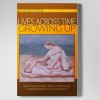Bragin’s recent IP.net post on combat veterans suggests a belated call for analysts to lace up their combat boots. The Veteran’s Adminstration has the largest mental health system in the United States; psychoanalysts are a shadow presence. Prudence Gourgechon encouraged more involvement at the January American Psychoanalytic Meetings.
This contrasts sharply with psychoanalysts engagement and dedication in WWI and WWII. Simmel in WWI saw thousands of “shell shocked” soldiers and ported that information back to Freud and colleagues, influencing our initial ideas about trauma and mourning. In WWII, Kardiner, Grinker, Spiegel and others were officers in the US Army and joined our men at battle. Grinker, (one of my teachers), was analyzed by Freud, and developed the first effective treatment for acute stress disorder. Grinker and Spiegel’s Amytal interviews are an extension of Freud’s early abreaction work. These psychoanalysts returned to the U.S. with great credibility from their scientific discoveries, clinical acumen and earned both military and societal respect. They saw men at the front, most with diagnosable mental ailments; some not. And the soldiers saw these psychoanalysts who ventured from behind the couch to care for them at times of great pain and need: not just “care,” but return them to functional lives.
Further, these psychoanalysts’ involvement with the military extended analysts’ commitment to society. Aichhorn ran the streets with his delinquents (and influenced the early pioneers such as Anna Freud, Peter Blos Sr., and Erik Erikson). Erikson, to learn about the Sioux and Yurok, lived among them. Anna Freud brought Jewish orphans from Theresienstadt and cared for them. Fraiberg set her infant-parent program amongst the most indigent communities in Michigan and later in San Francisco. More recently, Twemlow, seeking to decrease youth violence, succeeded in the most violent schools in Jamaica; Natti Laor, during the second Lebanese War, when one million Israeli refugees fled the North, moved his staff and clinic from Tel Aviv to Haifa and surrounding bombed villages; they migrated against the stream, closer to the war, closer to those in need.
Analysts carry valuable knowledge about inner life. We construct a refuge in our offices as part of our analytic frame so that we can ease the difficult work of our analysands. But, this analytic frame is also a frame of mind; a manner of listening. When I interviewed Israeli elite soldiers, several expressed surprise that so many were willing to talk with me — even confide — and recruit buddies. We can carry this listening and absorption outside the office to engage those in other settings. This is another way both to serve society and to strengthen our presence in society’s mind.
Meeting the soldier near the front, listening to those who are too stoic or not culturally prepared to come into an analyst’s office also increases our truer knowledge of the inner life of soldiers. Jonathan Shay has written two compelling accounts of the mental flotsam from the wake of Viet Nam washed up on American shores: Achilles in Vietnam and Odysseus in America. He is not an analyst He did not work in the battlefield; he interviewed those men who came to the V.A. severe PTSD program. Yet, his accounts come closer to the soldier’s soul in distress. Shay’s work was well-received in the U.S. Army War College and by the Secretary of the Navy.
Analysts extend our understanding of the frontiers inner life by exploring them not only in our offices but also outside; we learn more about the vicissitudes of inner pain and how to ameliorate such suffering. In such settings, we are stripped bare: we have no office, no stance behind the couch. In some ways this work is closer to working children and adolescents: they see us face-to-face, demand, hope and also battle against their hopes.
Stepping into the public arena, into the lives and settings of soldiers, strengthens our credibility as clinicians and scientists. But, there are other ways to learn about soldiers’ inner lives, such as asking them to speak to us. A former student at the Hebrew University, Amit Goldenberg, was a member of Special Forces. For his Bachelor’s thesis, he interviewed all the (surviving) men in his unit: none had ever spoken to a psychotherapist; none planned to. But, all spoke with him; he is one of them. His findings are heart-compelling (and earned him an honors degree). He is now a journalist and has finished his first novel. He has agreed to write something about what he has learned for IP.net. I hope that this is the beginning of a lively dialogue between analysts and soldiers, between ourselves and society.



